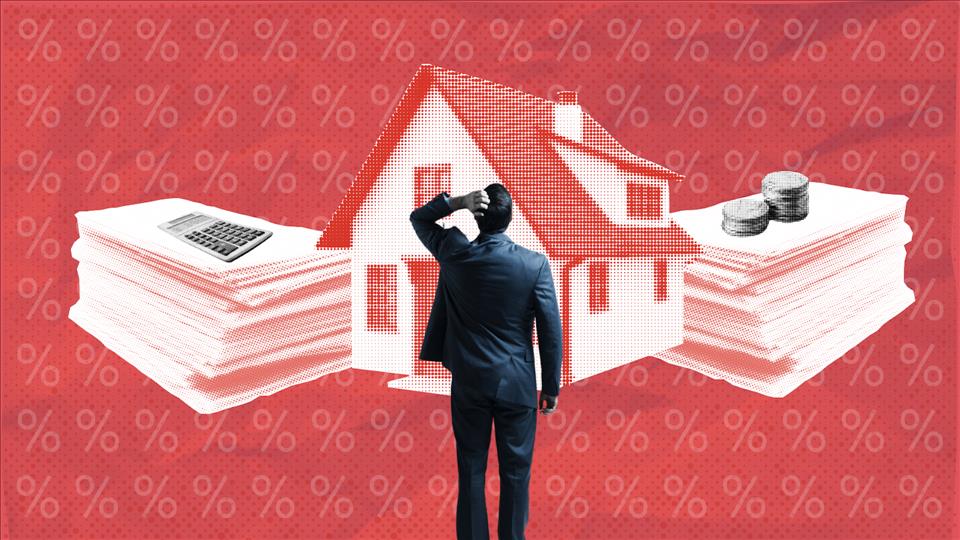
How Do Banks Assess You For A Home Loan? And How Do You Work Out What You Can Afford?
That means engaging with the world of banks and mortgage brokers, and grappling with what might be intimidating-sounding jargon – terms like“pre-approval”,“offset accounts” and“serviceability buffers”.
Here's a general guide to some of the essential steps: how to figure out what you can afford, how the loan process works, and some key things to watch out for before taking the plunge.
How much can you afford?Taking out a home loan means you'll be required to make regular repayments over many years. So, a bank or other lender will first want to make sure you can afford them.

This article is part of The Conversation's series on buying a first home .
We've asked experts to unpack some of the biggest topics for first-home buyers to consider – from working out what's affordable and beginning the search, to knowing your rights when inspecting a property and making an offer.
It's important to understand the difference between borrowing capacity and affordability.
Your borrowing capacity is the amount a lender is willing to offer you, based on your income and debts, and their own stress tests. Affordability, on the other hand, is about you – your lifestyle, choices and actual spending patterns.
These two things are related but don't always align, so it's important to factor affordability into your decision. Being clear on both helps you avoid taking on more debt than you can comfortably manage.
Doing your own calculations firstIt's a good idea to start with your own numbers. List all your household expenses over at least the past six months – everything from groceries to streaming subscriptions – and work out the monthly average.
Monthly subscriptions – such as streaming services – can have an impact on borrowing power. Oscar Nord/Unsplash
After setting aside some room for savings and unexpected costs, the remainder gives you an indication of what could be available for mortgage repayments.
As a rule of thumb, many suggest keeping repayments to no more than about 30% of your after-tax income.
Here are a few tips to avoid mortgage stress :
-
Budget for reality, not hope. Don't assume you'll slash spending just because you've bought a home.
Stress-test your budget. Could you still make the repayments if your interest rate rose by 0.25–0.5%? What if it rose by 1-2%? Don't forget the extra costs that come up with home ownership. Factor in insurance, council rates and higher utility bills in a larger home.
Your borrowing power depends mainly on:
-
household income
living expenses and debts (credit cards, car loans, buy-now-pay-later arrangements)
number of financial dependants.
Most banks have online calculators in their banking apps to check your borrowing capacity. The Australian Securities and Investments Commission (ASIC)'s Moneysmart site also provides calculators for borrowing and repayments.
Lenders are also required by law to check a borrower could still afford repayments if interest rates rose by a certain amount. This“serviceability buffer” is currently three percentage points.
Pre-approval doesn't guarantee a loanGetting pre-approval means a lender has reviewed your finances and indicates they're willing, in principle, to lend you up to a certain amount.
But it isn't a binding contract. You're not locked into taking the loan, and the lender isn't legally bound to provide it.
Still, getting pre-approval can have some benefits, including:
-
giving you confidence about your borrowing capacity
helping set realistic price limits and narrowing a property search
signalling to real estate agents and sellers that you're a serious buyer, which can make you more competitive in a hot market.
At auctions, pre-approval is especially important. Once the hammer falls, the sale is binding – there's no cooling-off period and no finance clause.
If you don't have pre-approval in place, you could win the bid but may be unable to secure finance, leaving you at risk of losing your deposit.
If financing falls through after winning an auction, it could mean losing a deposit. Mick Tsikas/AAP Different types of loan
One of the first decisions you'll face is whether to go with a principal and interest loan or an interest-only loan.
Principal and interest is the standard choice. Each repayment reduces both your loan balance and the interest owed. Most first-home buyers opt for this option because it steadily pays down the debt.
Interest-only loans mean that for an agreed period (say five years), you only cover the interest. Repayments are lower during that time, but the loan balance itself doesn't shrink.
To illustrate, if you took out a $200,000 interest-only loan at 5% for five years, you'd pay $10,000 a year in interest. But at the end of the five years, you would still owe the full $200,000.
Interest-only loans can make sense for some investors focused on cash flow, but they're far less common for first-home buyers.
Finding a loanThere are many ways to find a loan that suits your needs. You can compare products directly with lenders, use comparison sites, or go through a mortgage broker .
Mortgage brokers compare loans on your behalf and are often paid a commission by the lender, meaning you aren't directly charged a fee.
It's important to make sure they're licensed (check ASIC's professional register ), reputable, and – if possible – recommended by family or friends.
A good broker will break down fees, features and hidden costs so you're comparing more than just the interest rate. Before you sit down with a broker, think about what matters most to you: getting the lowest cost loan, or flexibility through features?
Take offset accounts as an example, where savings can reduce interest on the loan. An offset is a transaction account linked to your loan. If you owe $450,000 but keep $30,000 in the offset, you'll only pay interest on $420,000.
Another common feature is called a redraw facility . This lets you make extra repayments (thus reducing the amount of interest you pay) and withdraw them later if needed.
Disclaimer: This article provides general information only and does not take into account your personal objectives, financial situation, or needs. It is not intended as financial advice. All investments carry risk.

Legal Disclaimer:
MENAFN provides the
information “as is” without warranty of any kind. We do not accept
any responsibility or liability for the accuracy, content, images,
videos, licenses, completeness, legality, or reliability of the information
contained in this article. If you have any complaints or copyright
issues related to this article, kindly contact the provider above.
Most popular stories
Market Research

- Financewire And Tipranks Partner To Redefine Financial News Distribution
- Ethereum-Based Defi Crypto Mutuum Finance (MUTM) Reaches 50% Completion In Phase 6
- Stonehaven Circle Marks 13Th Anniversary With Hadrian Colwyn Leading Calvio Ailegacyx Innovation
- Citadel Launches Suiball, The First Sui-Native Hardware Wallet
- Motif AI Enters Phase Two Of Its Growth Cycle
- Dubai At The Centre Of Global Finance: Forex Expo 2025 Redefines The Trading Landscape



















Comments
No comment